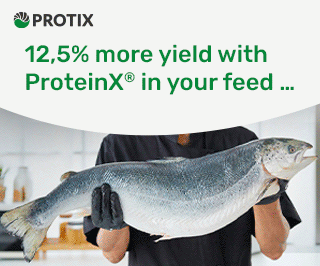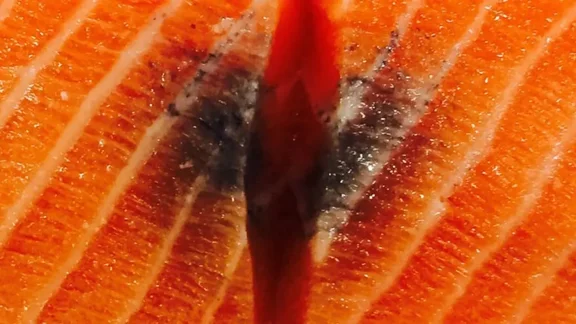Researchers at the Norwegian University of Environmental and Biosciences (NMBU) have linked the development of melanin spots in salmon fillets to changes in the fish’s fatty tissue.
This longstanding quality issue in the salmon industry has led to significant financial losses.
A recently published peer-reviewed article by NMBU researchers describes the stages of melanin spot development, associating it with “fat necrosis,” a condition observed in other animals and humans where the immune system reacts to dying fat cells.
“Dying fat cells release fat that can form cysts or granulomas, which are chronic accumulations of inflammatory cells. The fish’s immune system cannot handle the large amounts of free fat, leading to chronic changes in the musculature,” explained associate professor Håvard Bjørgen.
The researchers suggest that high levels of vegetable oils in feed, leading to an excess of polyunsaturated fatty acids and insufficient saturated fats, might contribute to fat necrosis.
“We consider it most likely that a high content of vegetable oils in the feed gives a fat composition with too much polyunsaturated fatty acids and correspondingly too little saturated fat. This is a known cause of fat necrosis in other animals. In addition, an unfavorable relationship between the fatty acids omega-6 and omega-3 can act as fuel on the fire,” says Professor Erling Olaf Koppang in the report.
An imbalance between omega-6 and omega-3 fatty acids could also exacerbate the issue, noted Professor Erling Olaf Koppang.
The Norwegian Fisheries and Aquaculture Industry’s research funding (FHF) has financed much of the research into melanin spots. FHF emphasized the need for the industry to use this new knowledge to implement measures to mitigate the problem.
“It is natural to review feed content, and some breeding companies have already increased omega-3 levels with positive effects. However, reducing overall fat content should also be considered,” said Sven Martin Jørgensen, head of fish health at FHF.



